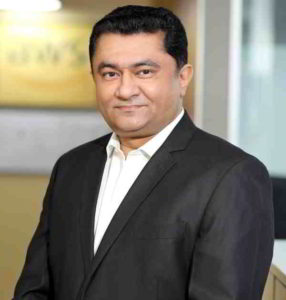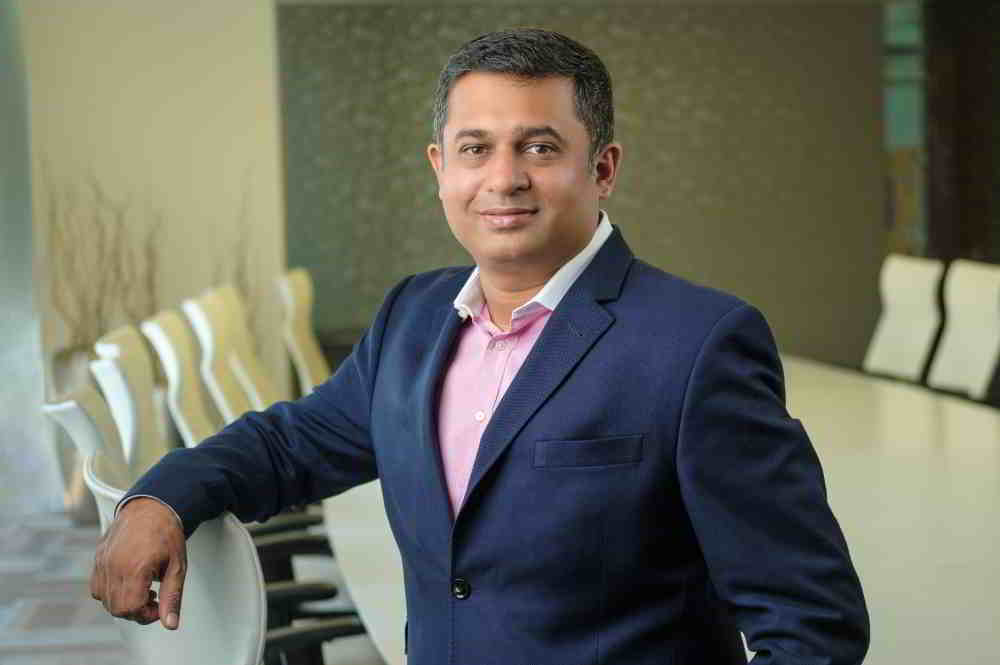A few months ago, Amazon Web Services launched its 12th AWS CIC (Cloud Innovation Center) in India. For the first time in the world, the CIC received sponsorship by a national government body, as this CIC is setup by NITI Aayog. Aligning with the Government of India’s mission around around health care, skilling, financial inclusion, physical inclusion, digital inclusion, and agriculture — the AWS CIC will offer technology services that focus on deep tech, for instance, artificial intelligence, chain, robotics, and so on.
In an email interview with Brian Pereira, Editor, Digital Creed, Manav Sehgal, Head of Digital Transformation and National Programs, Amazon Internet Services Pvt. Ltd. elaborates on the mission and how AWS is collaborating with the Government to solve large-scale problems such as National Pandemic response in the state of Telangana. To solve these problems, AWS had to partner with industry, academia, and startup research institutions to come up with solutions in a short time.
Edited excerpts from the interview follow:
DC: Can you update us on your public sector initiatives in the last 9 – 10 months?

Manav Sehgal, Head of Digital Transformation and National Programs, Amazon Internet Services Pvt. Ltd.
Manav Sehgal (MS), AWS: As per the charter of our organization, our focus is on national innovation priorities which are aligned with the mission of the Government of India, around health care, skilling, financial inclusion, physical inclusion, digital inclusion, and agriculture. AWS has quite a few services which focus on deep tech, for instance, artificial intelligence, chain, robotics, and so on. One of the programs that I run in the country is the Cloud Innovation Center (CIC). This is a global AWS program where we enable public sector organisations to collaborate with startups and enterprises, and develop innovative technology solutions that can address citizens. We determine sponsors; these are typically with global top tier universities like the University of British Columbia, Canada; California Polytechnic State University in Swinburne, and RMIT University in Australia.
We launched the 12th AWS CIC in India recently. This is a world-first in being sponsored by a national government body, as this CIC is setup by NITI Aayog. We announced this during our worldwide public sector summit a few months ago. As a sponsor, NITI Aayog brings their own team and of course, they provide us with a physical-virtual space where we can run co-innovation challenges. These challenges which are around the mission areas in health care, agriculture, or skilling, are projected by various state departments, government agencies and so on. Specifically, within NITI Aayog, the charter for the NITI Aayog CIC is led by Ms. Anna Roy, who is responsible for frontier technologies. NITI Aayog refers to frontier technologies as technologies such as AI, ML, Blockchain, Drones, and Augmented Reality, Virtual Reality, etc. The idea is to try and solve some of the ‘Good for India’ problems in the space using deep tech technologies, where we can at the same time enable ‘Make in India’ startups to deliver these solutions amongst established vendors and the IT departments of these government agencies as well. In many cases, AWS partners step in who have specialized capabilities around the deep tech space, or we would nurture Make in India start-ups which are born on the AWS Cloud, to give point solutions to some of these problems.
DC: What kind of problems are you looking to solve through such alliances, with your platforms and technologies?
Manav Sehgal (MS), AWS: These are very large-scale problems and one such problem that I’d like to talk about is where our entire network or industry, academia, startup research institutions, etc. came together, and that would give you a very good idea of the engagements that kept us busy over the last nine months, mostly during the COVID-19 time.
We executed a number of projects, one of which is well known in the industry – the National Pandemic Response or the NASSCOM pandemic solution. This was done under the leadership of NASSCOM, which brought together some of the industry leaders including Intel, Infosys, AWS, and several others on the national technology forum to provide a solution for India’s pandemic response. They published a paper on this, and also because of the successful deployment of this project, they shared a letter of appreciation with various participants, including AWS. Our role in the engagement was to drive the data analytics side of the solution and there were the owners in the front end, along with the application side of it. One of the successful deployments that we did for the NASSCOM pandemic solution was in the state of Telangana. We had to customize the platform to the specific situation or scenario that the state was in.
Every state is going through a different curve as far as COVID is concerned. At that stage, some states were going into lockdown while some others were making decisions to open up a lockdown. So being cognizant of the fact that each state will have different requirements, there was an aggregated central level requirement.
We had to build a solution, which first of all, could be delivered with tremendous speed. We had just a few weeks to go from the idea to the solution, a few days per state to deploy the solution in production and educate state government officials to use that solution effectively. We went on to deliver this project as well as similar projects on pandemic response running on AWS, delivered through our partners, including Fractal Analytics, Quantela, and BMC in Maharashtra. In fact, the solution is still running there for effective COVID response as well as in some other states. We made a presentation on this at AWS re:Invent 2020, and at also a number of government forums across the world, and talked about how India has handled COVID response through the use of technology. We are proud to say that we were invited to Singapore Data Science Forum to talk about how we used analytics and machine learning, and the solution, for which a number of other governments have shown interest.
The solution helps in a number of things. First of all, it brings together data for something as complex as COVID response across the lifecycle of the curve, from situational awareness to taking decisions on opening lockdown, unlocking economy, etc. It brings data from disparate sources. One of the challenges we faced earlier was the struggle to pull together high-quality data related to COVID, as either it was scattered on multiple departments, or it was incomplete. This is understandable since the government was also struggling with this.
Fortunately, India has a very rich ecosystem of open source, open data projects. Hence, we relied on a lot of public data that was available, which was combined with government-provided data as per the government approval, since government-provided data was secured, encrypted and transfer addressed as well. Public data was superimposed and what we could deliver through that were decision-making tools and dashboards. We built almost 100 dashboards through public data, which were done by getting data from social media and other sources on indicators or signals related to what was happening during the pandemic.
Let’s say the government launches a scheme or initiates lockdown or opens it up. Now, what is the Twitter reaction to that becomes one of the signals that government departments can use to ascertain whether the actions being taken are having the intended effect. This is more of a lagging indicator but as a leading indicator, they could look at any particular location with a spike in social media mentions of respiratory diseases or requests for medicine or guidance. This could become one of the signals that the state could look at, apart from the official sources coming from hospitals and other sources.
We are providing decision-learning capability with a combination of 10 plus machine learning models and other dashboards to the government, which include things as simple as situational awareness. For example, where and how the disease is spreading the most, where to go for essentials during the lockdown, and a more localized containment strategy – all of these were delivered through machine learning models developed by one of our partners. Machine learning models, large data or big data pipeline, cleansing of data – all of these were brought together throughout the pipeline for driving the analytics, delivering the scale with speed. We had to bring to bear not only a number of AWS services in AI, ML, data leak technologies, and analytics technologies, but also a number of our best of breed partners.
So Fractal Analytics provided machine learning model capabilities, Mapbox provided geospatial visualization and GIS data. Mapbox collects global data from people’s mobility and traffic mobility; it has a number of applications that collect data with permissions from the users. Based on this data, a view is given on how busy a particular street is during pre-COVID, during lockdown, or post lockdown. This data overlaid on top of trending visualization on how things are changing on a map was very unique to the solution. This was highly customizable for each state, not only in terms of features but also for technologies, which came together. The social media analytics was delivered by our partner. This was not a single project, rather it was a series of engagements with state governments, the Government of India, industry, and academia. This further increased the Government’s trust in such technology solutions, quickly coming together in the post-pandemic world to deliver rapid outcomes for national scale engagement. This was one of the reasons we successfully signed the agreement with NITI Aayog.
DC: This obviously seems like a massive project at scale. Could you please tell us how you dealt with all the challenges in terms of both technical and integration of all kind of siloed unstructured data?
Manav Sehgal (MS), AWS: This is a very important question, which we come across every time we set up a region or we work with the local government and the local community of startups and industry. The answer lies in the programs that we established which are replicable programs across the globe. These programs carry certain best practices that can be quickly replicated when brought into the Indian market; at the same time, these are flexible such that can be localized for the Indian market or as per the specific requirement of the government. The AWS Cloud Innovation Centers that we have set up with NITI Aayog is one such example, which is set up to handle this complexity.
We have this guiding principle at Amazon as well as at AWS, which is to always work backwards from the customer. We start with the customer when it comes to thinking about what product we should design next, or what we feature or service should be added to AWS. And through this process, we actually codify for the government to experiment with.
The first step in this process is to identify the problem that we want to solve. I am speaking about a live project on how to help the underserved community in India with early intervention of lifestyle diseases like diabetes or cancer. As lifestyle diseases develop over time and they follow different paths of damages in every patient, early intervention for such diseases can be tremendously helpful in either delaying the onset or completely preventing the disease to become problematic for a patient. We have a significantly large population of an underserved community not just in rural and remote India, but also in city dwellers, and AIIMS is looking to address this problem statement. We started working closely with the sponsor for the problem, which was AIIMS, and applied backward mechanisms or AWS innovation mechanisms and came up with big ideas to resolve the same.
Once we arrived at some understanding of the solution, we had the choice of bringing in an AWS partner or internal AWS professional services team, or even working with the sponsor’s own technical team if capable of solution design. Forming a team again between AWS, the challenge sponsor, NITI Aayog, the partners or startups involved, we could initiate a hackathon where Make in India startups are invited. Post solution design, prototyping is important and the hackathon would play a big role in prototyping. In this project, as per the requirement of certain dashboards, analytics to be done, the software was used as a service platform to deliver the prototype or proof of concept. From defining a one-line problem statement to coming up with the most production-ready prototype, we could do all of these within eight weeks while considering the challenges involved in getting inputs from the stakeholders involved, interviewing local Ph.D. doctors and specialists, and delivering a production-ready, cloud-based prototype for running ML on this data.
A dedicated team invested in cloud credits for running this prototype, and AWS invested in some of the best practices brought to the table, whereas the partner invested in prototype licenses, and NITI Aayog invested their time in guiding this entire project. Hence, there has been a lot of co-investment which is going on for one purpose of solving a meaningful problem at India scale, and arriving at a solution very quickly in a safe, experimental environment.
If we can remove some of the typical risks with a public sector project like cost, quality of solutions, long procurement cycles, and select solution based on pricing instead of the best one, and if we can create a safe environment to experiment for making India startups government institutions, design thinkers, industry, we can come up with the solutions quickly.
It is a very low-risk experiment; we can always try another way if one is not successful. We want to increase the frequency and the quality of experiments we run throughout the year, with NITI Aayog, public sector organisations, institutional sponsors in various problem areas, which are either unsolved so far, or very difficult to solve and typically require deep tech technology interventions. The other side of AWS is investments, which is investments ranging from machine learning, or quantum computing, or ground station as a service, for satellite communication to virtual environments, from building robotics solutions to investment in petabyte-scale, public data, open data storage for anyone to access across the world. With all these investments being accessible to Make in India startups, it would be an opportunity for them to experiment in this very rich environment where you can truly talk to the end customer who is actually facing that challenge.
We are still facing challenges in terms of data being siloed, but we are seeing a much higher velocity decision-making process in the environment.
DC: How many states in India are participating in the pandemic related solution provided by AWS?
Manav Sehgal (MS), AWS: AWS has relationships with most of the state governments and with many of the states been delivering pandemic response solutions or situational awareness dashboards through another partner called Quantela. We have delivered solutions with our partner Fractal Analytics and NASSCOM, along with many other partners. I may not have the exact number, but it is a significant coverage across states. The interesting thing we learnt over this project is that each state had its own requirements. Though there were certain common requirements, related to the research around the pandemic and how to build machine learning models for different stages of the pandemic decision-making process; there were states too which were giving us unique requirements as well. For instance, the number and type of data sources are very different across states. There are different requirements for Karnataka than that for Telangana. There is no one size fits all solution, but at the same time, we have to ensure optimization in the investment. It is significant to note that the number of COVID projects were done pro bono by the industry, as we wanted to make sure that they are cost-effective for not only developing and deploying but also running the solutions for their lifetime.
DC: How is AWS going to manage the financing part of it in the future?
Manav Sehgal (MS), AWS: We do not treat our AWS partners any differently than we would treat any of our customers. We enable several other programs along with this one, which would gear the startup business of our partners. Each of these programs has a go-to-market component. For example, if an AWS health partner in startups has excellent ideas on solving diabetic retinopathy but lacks global access, we would help them in the initial investments required to build a globally scalable solution. We will help them with mentoring needed in terms of technology, architecture, etc. so that they build the best product for the solution. Once they are running live on AWS and getting access to some of the projects done by NITI Aayog, this, in return, provides credibility in the target market segments for association with such important stakeholders and projects. Based on these references, we invite them to be part of the AWS marketplace, which is where they can list their product or solution like a software as a service solution. Listing on the marketplace potentially gives them access to millions of our active customers globally. Partner content is very well integrated into AWS content and we are very happy to bring our partners on stage and for them to talk about the solutions on AWS.
The meta-problem that we’re trying to solve is to reinvent the technology experience for the public sector in India. Currently, some of the challenges faced by a typical government buyer are the challenge in evaluating technologies, choosing between different providers, piloting technologies and so on.
One of the innovations we want to incorporate is amplifying the government’s experience of buying the technology. We may work with the government marketplace by making it viable. We are working with startups, funding agencies, research communities and NGOs globally, thus creating a global network. The government is also realizing the importance of such co-innovation. The National AI Resource platform in IIT Kharagpur is developing skills in collaboration with AWS – this is an example of how AWS would be funding some institutes of national scale.
DC: What is your opinion on Government’s achievement for payments in India with India Stack? If the government plans to build a tech stack which is vendor agnostic, how would AWS respond to the same?
Manav Sehgal (MS), AWS: There is a distinction between using best of breed open source technologies and bringing multiple vendors, whether it is cloud or GIS or any other technology domain together to solve the same problem. Bringing best of breed open source solutions together with speed is achieved in terms of integrating that solution. In this case, the primary thing one gets is the choice in terms of which framework, package or algorithm to go for. On the other hand, while working with multiple cloud service providers to build the same solution, literally one has to follow the lowest common denominator these cloud service providers provide. Due to own strengths and challenges of every cloud provider, a lot of complexity is inherent in the process. But when it comes to providing access to open source to the government, it can be done on AWS smoothly. In fact, AWS invests very significantly in open source technologies.
An example of open source and database is one that brings in database technologies from other sorts of enterprise-grade database mentors. Licensing is also brought, which can be punitive over a period of time. As an alternative, there is a rich ecosystem of a network of open source databases that have come up with PostgreSQL, MySQL challenges, and embracing those open source technologies from the source may have multiple flavors, managed by multiple vendors. One doesn’t know which one to pick and choose just for that particular database technology. Now, if one chooses AWS, he or she can actually go with all the support security patching and managed services; coming with a hyper-scale cloud provider like AWS, can have access to that same open-source technology, highly optimized to run on a highly distributed cloud environment. So all the burden of sourcing and managing that technology and ensuring that particular technology is the latest and greatest is transferred to AWS as the cloud provider, post which the government can focus on innovating open source.
As per some of the recent announcements during AWS re:Invent 2020, we are increasingly following the theme of cloud everywhere while also increasing the investments making in hybrid and edge computing. This means the government can not only decide to build anywhere they want and bring it to the cloud or build on the cloud and take it somewhere else, but it could literally bring some of the AWS services to their local data center if there is a use case for that. For instance, one use case could be very latency-sensitive applications, which require very low latency for high-performance computing. An AWS service called AWS Outposts can be placed potentially within a government data center while ensuring that the skill building and capacity building can be done on AWS Cloud or on VMware. On VMware on AWS Cloud, those skills need not to be replicated, unlike a challenge seen in multiple vendors. Due to not having a common API, the team needs to be trained on three different technologies, or three teams are required to work on three different technologies. We have several teams that are working on competing open source technologies – for example, a team working on TensorFlow machine learning framework, another on MXNet (a competitor to TensorFlow), and some of the areas on PyTorch. Each team has a charter to make the best TensorFlow deployment on AWS, or make the best MXNet deployment on scalable cloud, and so on. In the end, our customers get choice of best of breed open source technology stacks running on a scalable cloud infrastructure, so that they are not worried about the scaling of skills or the support or maintenance required.
We are grateful to AWS’ PR agency in India for assisting with the production of this interview.









